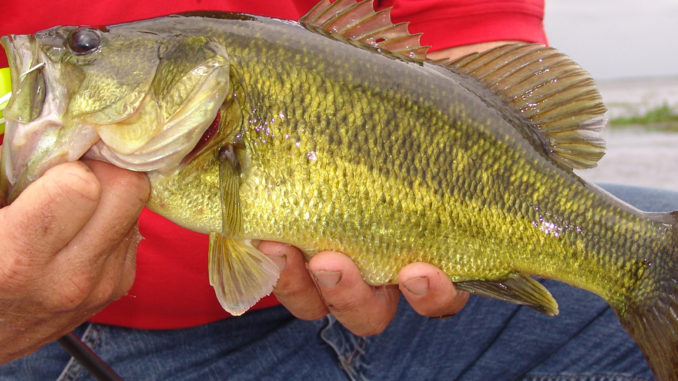
Topwater action is second to none on NC lakes
When asked my favorite month to fish, it is a close call between May or January, but I think May gets the nod because of good weather and aggressive bass. In January, you can have the water all to yourself and really get on quality schools of fish that stay put. In May there is a lot of movement, but it is all in the pursuit of feeding.
Two main topwater patterns exist this month. One is in spawning coves for bass still hanging around seeking revenge on the bream that aggravate the bass while they are spawning, trying to eat both the eggs and the fry. Now, it is the bass’s turn to just sit outside the bream beds and dart in and eat any time they get the urge.
The other is bass eating spawning shad and blueback herring. Bass target them while they are spawning as well, early in the morning along the banks. They also get out on points and funnel areas trying to capture an easy meal. What can be easier that eating a distressed shad on the surface or pinning one to the back while it spawns?
So for the cove-oriented bass you have several topwater choices. Prop baits painted in bream patterns are really popular around bluegill beds. I still like poppers (such as) Pop-Rs better, but I use both. For these baits, use 12- to 20-pound monofilament line that floats. Heavier line on the prop bait prevents it from twisting around the front propeller. Everyone has their preference, but I prefer a short, stiff rod for twitching these baits. I like a 6-foot-3 Daiwa Steez rod and matching reel, or for a less expensive alternative, try a 6-foot or 6-foot-6 Team Daiwa T series rod in in MH with Daiwa Laguna baitcasting reel. They are much less-expensive but still very light and dependable.
My other favorite bait for cove bass is the hollow frog. Snag Proof are my favorite, but there are tons of good ones out there. I prefer frogs if the cover is too heavy for baits with treble hooks. Often because of the heavy cover, you will get bigger bass on the frog than others.
The frog is one bait where you have to throw braid. Even if you hate braided line, it is the only line that allows you to set the hook properly. I use 65-pound braid on a Daiwa Zillion 6.3:1 reel and a 7-foot Daiwa LT heavy-action rod. This rod has a little bit of tip and is very strong to yank big fish out of the heavy stuff. The key to working the frog is to make it “walk the dog” when it gets into open holes in the cover.
For the bass that eat shad or herring in open water, you’ve got to have walking baits, my favorite being Daiwa’s Pop N Skater. It is a walking bait better than four inches long and weighing three-quarters of an ounce, so you can really heave it out there. For open water, I love Daiwa’s new T3 reel. The features that reduce friction allow you to cast around 5- to 10-percent farther. I spool up with 12-pound mono, and it just casts forever. Many anglers prefer a long rod, but I still prefer the shorter one because it is easier one your arms when you have to twitch it all day. You can get even more distance with a longer rod, but you’ll pay for it in wrist pain if you fish several days in a row. With the walking bait, I target long points and rip-rap. The best points are the really long, shallow ones that drop off sharply on the ends.
If you find a shad spawning going on — I like the Pop-R style bait or an Assassinator buzzbait. I follow with up with a white Oukast Swimjig for short strikers. Shad typically spawn on the bank on either rock or clay. Falls of Neuse Reservoir is my favorite lake when this is going on because there are so many suitable banks.
This May, get after them with a handful of topwater baits and rods and have some fun, because soon you’ll have to fish deep offshore as June approaches.





Be the first to comment